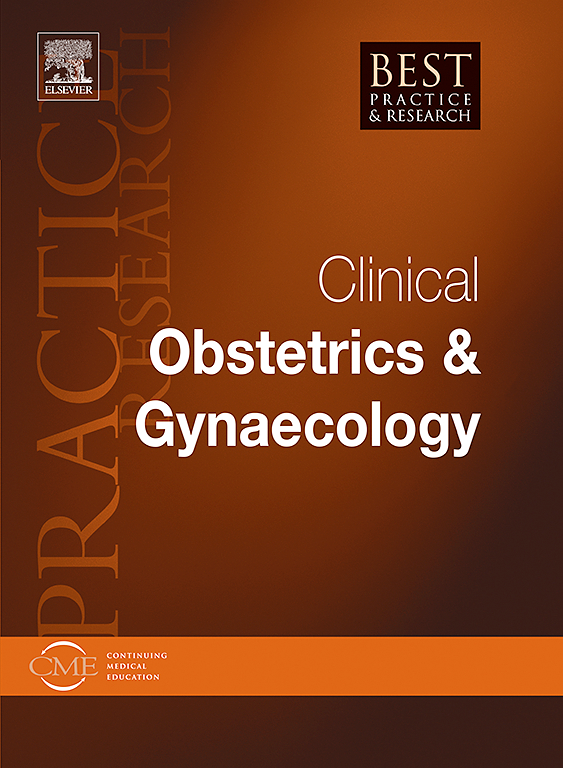Maternal adnexal masses in pregnancy
IF 4.1
2区 医学
Q1 OBSTETRICS & GYNECOLOGY
Best Practice & Research Clinical Obstetrics & Gynaecology
Pub Date : 2025-07-23
DOI:10.1016/j.bpobgyn.2025.102643
引用次数: 0
Abstract
Maternal adnexal masses are increasingly detected during pregnancy, primarily due to the widespread use of ultrasound in obstetrics. Most of them are functional cysts that resolve spontaneously. Lesions visualized by ultrasound in adnexal topography may be retroperitoneal or intraperitoneal (non-gynecologic or obstetric/gynecologic formations, such as pregnancy-related masses, subserosal uterine fibroids or true adnexal lesions). The largest number of adnexal lesions do not change their ultrasound morphology in pregnancy. However, endometriomas may decidualize, mimicking borderline or stage I invasive ovarian malignancies. The patient management can be conservative (ultrasound surveillance) or surgery. The decision depends on a series of factors including the risk of malignancy. Until mathematical models have been widely validated in pregnancy, the International Ovarian Tumor Analysis Group recommends using simple benign descriptors and expert subjective assessment to predict the risk of maternal adnexal malignancy in pregnancy. In the future, artificial intelligence could be useful.
妊娠期母体附件肿块
由于超声在产科的广泛应用,妊娠期间母体附件肿块越来越多地被发现。其中大多数是自发消退的功能性囊肿。附件地形超声显示的病变可能是腹膜后或腹膜内病变(非妇科或产科/妇科病变,如妊娠相关肿块、浆膜下子宫肌瘤或真正的附件病变)。绝大多数的附件病变在妊娠期不改变其超声形态。然而,子宫内膜异位瘤可能会去个体化,类似于交界性或I期浸润性卵巢恶性肿瘤。患者的治疗可以是保守(超声监测)或手术。这个决定取决于一系列因素,包括恶性肿瘤的风险。在数学模型在妊娠期得到广泛验证之前,国际卵巢肿瘤分析小组建议使用简单的良性描述符和专家主观评估来预测妊娠期母体附件恶性肿瘤的风险。在未来,人工智能可能会很有用。
本文章由计算机程序翻译,如有差异,请以英文原文为准。
求助全文
约1分钟内获得全文
求助全文
来源期刊
CiteScore
9.40
自引率
1.80%
发文量
113
审稿时长
54 days
期刊介绍:
In practical paperback format, each 200 page topic-based issue of Best Practice & Research Clinical Obstetrics & Gynaecology will provide a comprehensive review of current clinical practice and thinking within the specialties of obstetrics and gynaecology.
All chapters take the form of practical, evidence-based reviews that seek to address key clinical issues of diagnosis, treatment and patient management.
Each issue follows a problem-orientated approach that focuses on the key questions to be addressed, clearly defining what is known and not known. Management will be described in practical terms so that it can be applied to the individual patient.

 求助内容:
求助内容: 应助结果提醒方式:
应助结果提醒方式:


